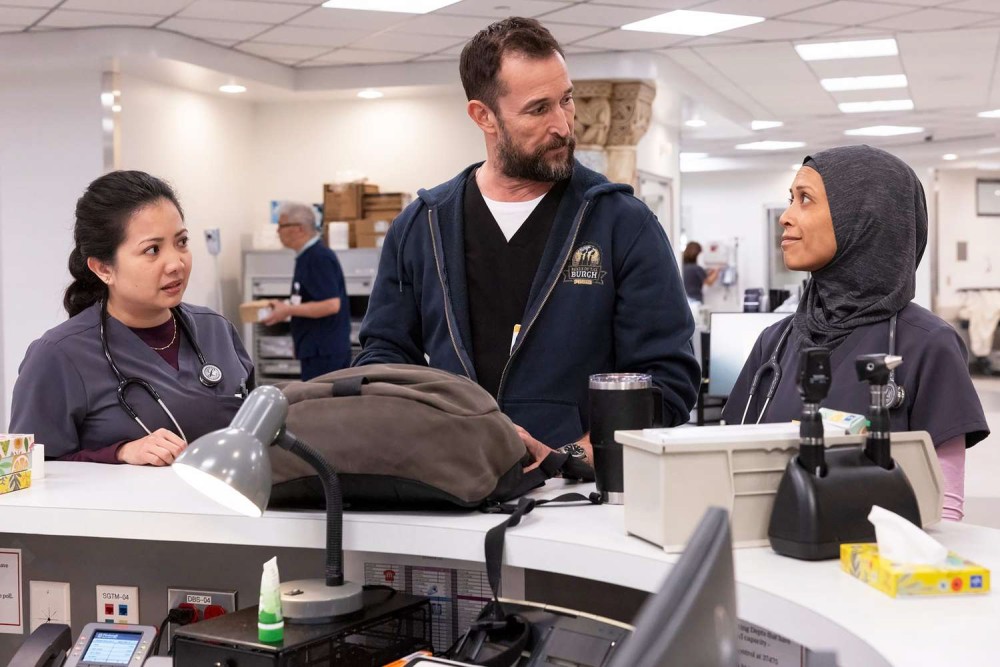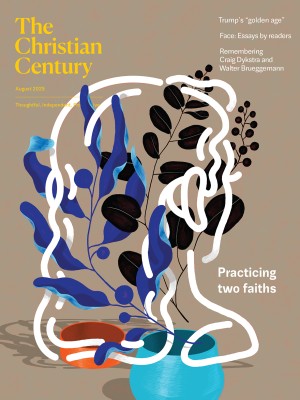Looking for healing in “the pitt”
The ER in Scott Gemmill’s medical drama is a virus-infected Petri dish of all that ails the body politic.

I am the kid who passed out in high school when the Red Cross gave a presentation about the value of donating blood. The woman hadn’t even gotten to a discussion of actual needles before my head hit the desk. Medical dramas, as you might imagine, have never been my cup of tea. But it has been many months since I watched a show as passionately as I watched The Pitt (created by R. Scott Gemmill; streaming on Max), a medical drama set in an overcrowded, underresourced emergency room in Pittsburgh, nicknamed “the pitt” by its overworked staff.
The Pitt’s creative team was also responsible for ER, the juggernaut critical and commercial success that ran for 15 seasons between 1994 and 2009, so they know something about the genre. But where ER married frenetic emergency room pacing with long, sweeping personal arcs for the main characters, The Pitt is all trauma all the time. The sense of ceaselessness is heightened by the choice to constrain each episode to one hour of a 12-hour shift, which balloons into a 15-hour shift thanks to a catastrophic event near the end of the season.
Read our latest issue or browse back issues.
This device both slows time down (nothing can be wrapped up quickly) and heightens the sense of urgency (there is no skipping ahead to the resolution). When a young adult overdoses on fentanyl, we watch hour by hour as his parents face the excruciating decision to remove life support, then whether to donate his organs, then how to say goodbye with the help of their priest. In most shows, this would be compressed to one of several plotlines in a single episode. In The Pitt it lasts for half the season, and we are forced to feel how long the hours in that never-ending day must have felt for those parents, and for the care team advising them.
Of course, that story is just one piece of flotsam in the unrelenting flood of patients. The beating heart of the show—in a show where a lot of hearts stop beating—are the doctors, medical students, and nurses, led by Dr. Robby (Noah Wyle), who perform heroic feats of competence as an extraordinary array of medical emergencies cross their gurneys, from heart attacks and amputations to accidental drownings and broken bones.
Like ER before it, the show has a strong commitment to bodily verisimilitude, by which I mean copious amounts of blood. Blood shoots, sprays, oozes, and gushes out of every natural orifice and many others caused by human hands. Tubes are inserted into lungs and arteries, small balloons are inflated in hearts, bones are sawed through, and bags and bags of blood are pumped from one body to another. These intense procedures have the double effect of creating a strange kind of bodily equality and making our bodies seem stranger than we can usually imagine. Under the knife we are all the same amalgamation of interconnected biological systems, but who among us regularly imagines those systems in all their strange complexity, with all of that blood?
This is usually where I stop watching. But instead of being grossed out, I was mesmerized by the expertise and competence on display. Surrounded as we are by shortened attention spans and attacks on expertise at all levels, there was something profoundly comforting about watching a group of highly skilled adults recall an astonishing array of expert knowledge directed toward saving lives.
Not being able to understand what is going on used to lend the medical drama a certain kind of glamour. The very fact that I don’t know what paracentesis or a carotid endarterectomy is or the difference between cardioversion and defibrillation makes me all the more grateful for the fictional doctors who do. But The Pitt is also acutely aware that public trust in expertise is at an all-time low. These doctors face patients who question their decisions based on health advice they’ve found on the internet, kids with measles who were never vaccinated, people who get into a fight with other patients over whether they should be wearing masks in the waiting room. Many of the patients are angry and suspicious of the care they will receive before they even get out of the waiting room.
“The world’s changed. People are angrier. Tempers are shorter,” the charge nurse Dana Evans (Katherine LaNasa) explains to a new intern tasked with maintaining order in the overcrowded waiting room. When Dana is later punched in the face by a disgruntled patient who is convinced that immigrants and homeless people are getting better treatment than he is, the intern is shocked to learn that almost every nurse has a story of being physically attacked by the people they are trying to help. Rather than provide more funding for staffing, more support for the nurses, even simple things like enough beds to house all their patients, the hospital manager pops in a few times throughout the shift to harangue Dr. Robby about his “patient satisfaction scores” and to give suggestions for more efficient billing.
In other words, “the pitt” is a virus-infected petri dish of all that ails the body politic. The medical team is already charged with diagnosing and treating every possible kind of ailment and emergency. Now they are asked to mediate social conflict, provide impromptu counseling, keep the peace between warring political factions, serve as temporary housing for unhoused and uninsured patients in mental health crisis, and put their bodies on the line when the anger that threatens to tear society apart can no longer be contained.
There is no expertise in the world that could mediate all these demands. All they can do is turn to the bleeding, broken bodies in front of them. It is probably a fantasy that a few good people with the right expertise can fix what ails us, but I found I didn’t mind the blood as long as I could watch the wound being healed.





